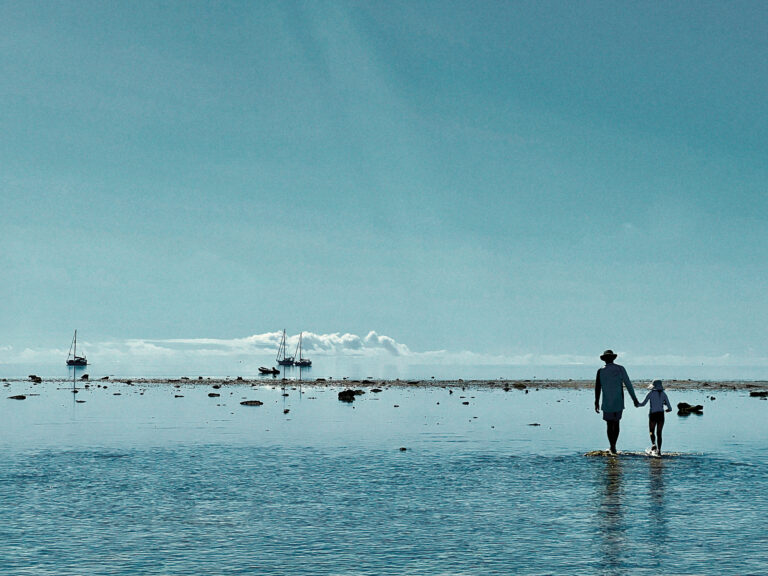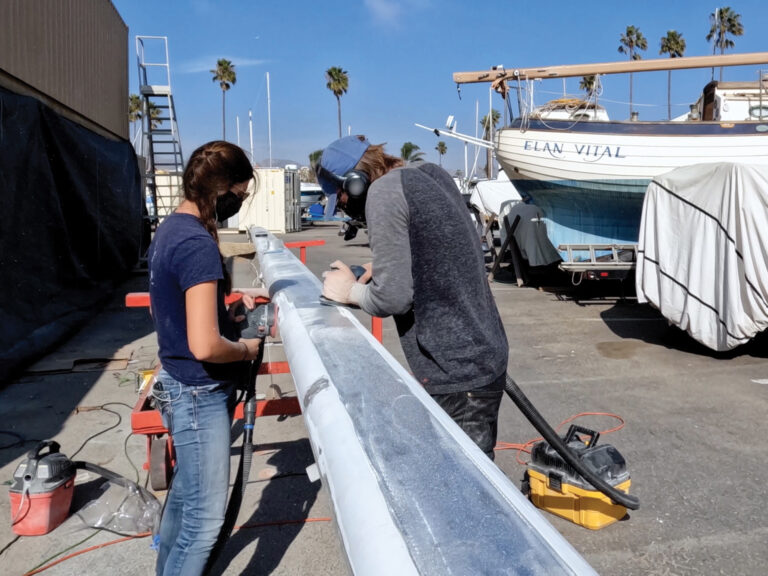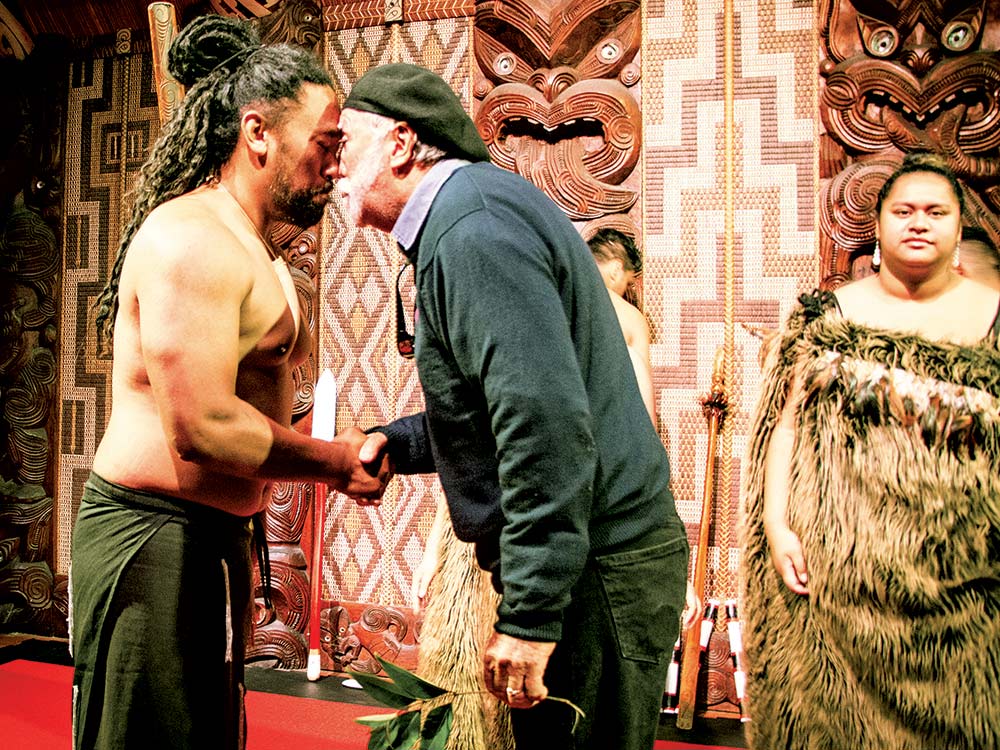
Being serial circumnavigators allows us, after 49 years sailing together as a cruising couple, to continuously take our planet’s cultural temperature. My wife, Carolyn, and I are passionate about our fellow homo sapiens, especially how they interact within watery venues. Take New Zealand for example, an island nation that has been teeming with risking-taking mariners since the 1200s.
To say that New Zealand — that tiny country of silver ferns where the America’s Cup resides — is innovative, hardworking, highly focused, forward-looking and very competitive is to make an understatement. But New Zealand is also extremely remote and difficult to sail to. Plus, its biosecurity screening for arriving vessels has become more stringent since the dreaded Mediterranean fan worm arrived on the bottom of a tramp steamer (See “Biosecurity and the Visiting Cruiser,” at the bottom of this article). Similarly, for these and other reasons, its neighbor, Australia, has seen a steady decline in cruising vessels arriving to hide for the summer from the hurricanes raging to the north.
New Zealand, on the other hand, gets roughly 650 yacht arrivals per year, and its boating industry wants that number to rise, not ebb. Kiwis love to buck social trends and do the impossible. Thus, while many Western nations have closed their borders to immigration, the Land of the Long White Cloud still has its welcome mat out, particularly to marine visitors.
Another unique advantage for visiting mariners is how Kiwis self-identify. Some small nations see their citizens as cowboys or poets or gourmets, but every Kiwi is, in their heart, a sailor. There’s no nation as nuts for boats, sailors and sailing as New Zealand. If you stop five people on the streets of Auckland, at least one of them will have raced on a sailboat sometime within the last week.
Even more amazing is their well-known thirst for radical improvement in the field of yacht design. Kiwi sailors often whittle up shockingly innovative concepts on a discarded stick with an old Swiss Army knife. If you doubt me, just check out the latest America’s Cup mono-foiler. If that ain’t radical, I don’t know what is.
If you stop five people on the streets of Auckland, at least one of them will have raced on a sailing yacht within the week.
But Kiwi sailors’ creativity and innovation does not stop on the racecourse, it extends to marketing their marine industry as well.
Of course, there’s nothing new about tourist destinations attempting to attract more international tourists, even to watery venues. A good example in the Caribbean is Antigua. Half a century ago their hotel association founded Antigua Sailing Week, primarily to prolong the winter cruising season by a month. This worked beyond their wildest dreams: tens of millions of dollars have since been pumped into the local economy.
New Zealand, via a loose alliance of various marine industry groups, is currently attempting a similar trick with the more widespread cruising community. The idea is to get more influential, blogging sailors to arrive in Opua, Bay of Islands, earlier in the six-month-long season. And being Kiwis, they’ve put their own unique marketing stamp on the concept.
RELATED: Pacific Passage Planning
First off, they haven’t made the promotion all about themselves. They’ve formed the South Pacific Sailing Network as the umbrella organization. Their spread-the-wealth concept isn’t to merely increase their own marine traffic flow, but to benefit the entire Western Pacific region of Tonga, Tahiti, Fiji, Vanuatu and New Caledonia at the same time.
In essence, Kiwis think that the best, most economical way to be competitive globally is through regional cooperation.
“It’s all about cross-promotion, not only of various marine industries and destinations within New Zealand, but also of the entire Pacific region,” says Whangarei Town Basin spokesperson Sharron Beck. “We think this area is so rich and diverse, and has so much to offer the cruising sailor that it shouldn’t be dashed through. We hope circumnavigators spend a year or two in our local waters, whether in New Zealand, Tonga, Fiji or wherever.”
The second concept is that each cruising Kiwi sailor is a goodwill ambassador of sorts for their county and marine industry. Thus, foreign-bound sailors are given promotional materials to distribute at various venues as they sail the world. It’s a highly cost-effective way to communicate their enthusiasm for their island nation.
RELATED: Hideaway on New Zealand’s North Island
The third leg of their promotional efforts are (hooray!) the cruiser parties. The Kiwis stage a rum-soaked bash in Moorea — immediately after the west coast Puddle Jumpers arrive in Tahiti — to funnel these sailors into the Vava’u Bluewater Festival of Tonga, a weeklong party and seminar series that encourages the sea gypsies to make the 1,000-mile non-trade winds passage to New Zealand. Parties embedded within Fiji’s Musket Cove Regatta also compliment this southward migration.
The basic idea is as much about time as money: to slow down the “Pacific Dash” and, instead, turn it into a multiyear meander.
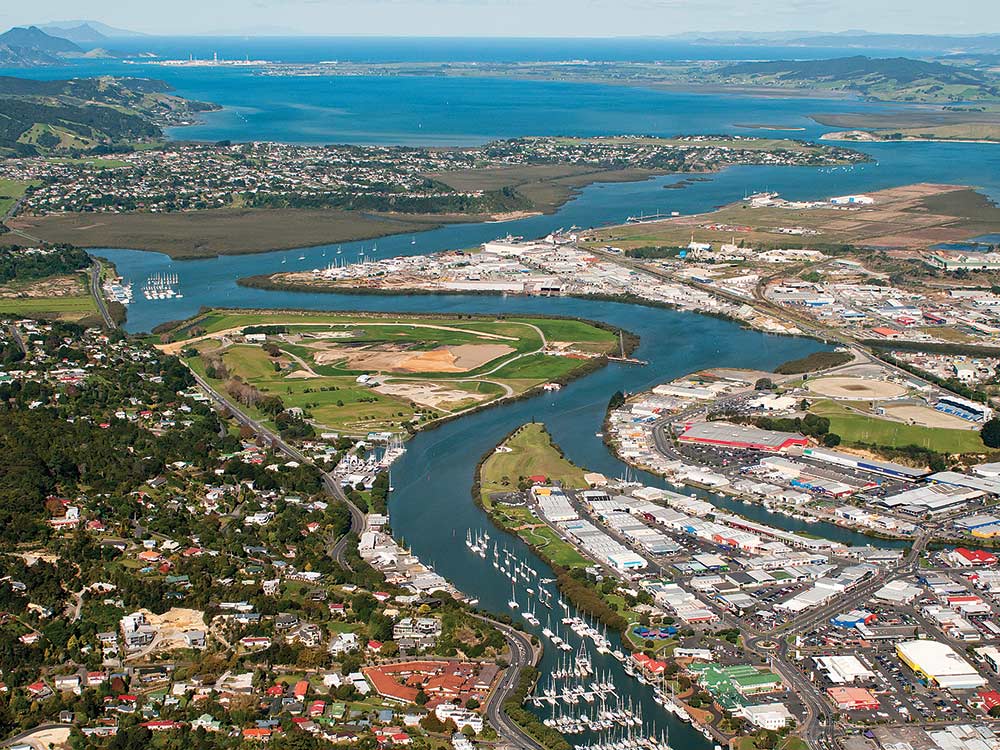
New Zealand marine planners believe that if the cruising region benefits, they, and their well-appointed shipyards,will also benefit, especially since so many new marinas are under construction on the North Island in preparation for the influx of cruising visitors to the America’s Cup village in 2021.
“Many passing sailors are hesitant to journey southward because of our weather,” said Paul Stringer, manager of Bay of Islands Marina, “so during the Tonga festival, we have weather and passage seminars given by Kiwi sailors who have done this passage dozens of times. Plus, we fly in biosecurity officials direct from Auckland so everyone knows exactly what to expect upon arrival in Opua or at Marsden Cove. Yes, we’re a remote island destination with some special biosecurity and customs rules, but these are easily complied with if the visiting sailor is prebriefed.”
The fourth leg of the promotional efforts are local “Welcome, thanks for visiting” events such as the Bay of Islands Cruisers Festival, which not only features endless parties and free meals but also many educational opportunities for world cruisers.
“I thought local sailmaker Roger Hall’s seminar on emergency sail repair was superb,” Carolyn told me the night she attended his session. “When I first arrived at the loft, I was a little amazed to find a standing-room-only crowd, but I don’t think I’ve ever learned more about sail repair faster.”
I personally can’t say which I enjoyed more, the informal talk on diesel mechanics or the seminar on lithium batteries and their high-tech charging devices, known — I have now learned — as battery management systems.
These Kiwi marine industry folks really pay attention to details. Upon tying up at the Customs and Immigration dock in Opua, a smiling welcome-wagon lady greets each vessel with a goody bag full of free gifts, coveted retail swag and special marine offers.
One of the main attractions of New Zealand is its strong indigenous culture. This diversity is fully incorporated in its promotional efforts as well. Traditional Polynesian dancers are showcased during the Bluewater Festival in Tonga. In addition, arriving sailors in New Zealand receive a traditional Maori dockside welcome.
Kiwis think that the best, most economical way to be competitive globally is through regional cooperation.
If you enjoy shmushing noses with Maori warriors or studying ancient Polynesian war watercraft, the nearby Waitangi Treaty Grounds (where New Zealand’s founding legal document was signed in 1840) is the place to go. Carolyn and I spent a delightful day there, learning about the early history of the country. At its core, and throughout its history, New Zealand has been a remote island nation of rare adventure. Don’t forget the Maoris came from the mythical Polynesian land of Hawaiki in seven double-hulled canoes. To this day, each and every Maori can tell you the name of the canoe his ancestors arrived aboard.
Language isn’t a problem for visitors; English is predominant and Maori celebrated. A simple “kia ora” upon meeting will make any Kiwi smile. Of particular cultural interest is the haka, a traditional Maori posture dance of welcome and warning. We found the hui ritual (literally, a Maori assembly) fascinating: each guest stands and gives a stylized history of their birthplace, current home and personal history. Needless to say, exactly which specific waka (canoe) the speaker’s ancestors arrived aboard is prominently mentioned. The Maoris were delighted when I said in response, “My waka is a 43-foot Wauquiez ketch.” My niece, visiting from Chicago, chimed in with, “My waka was a Boeing 737!”
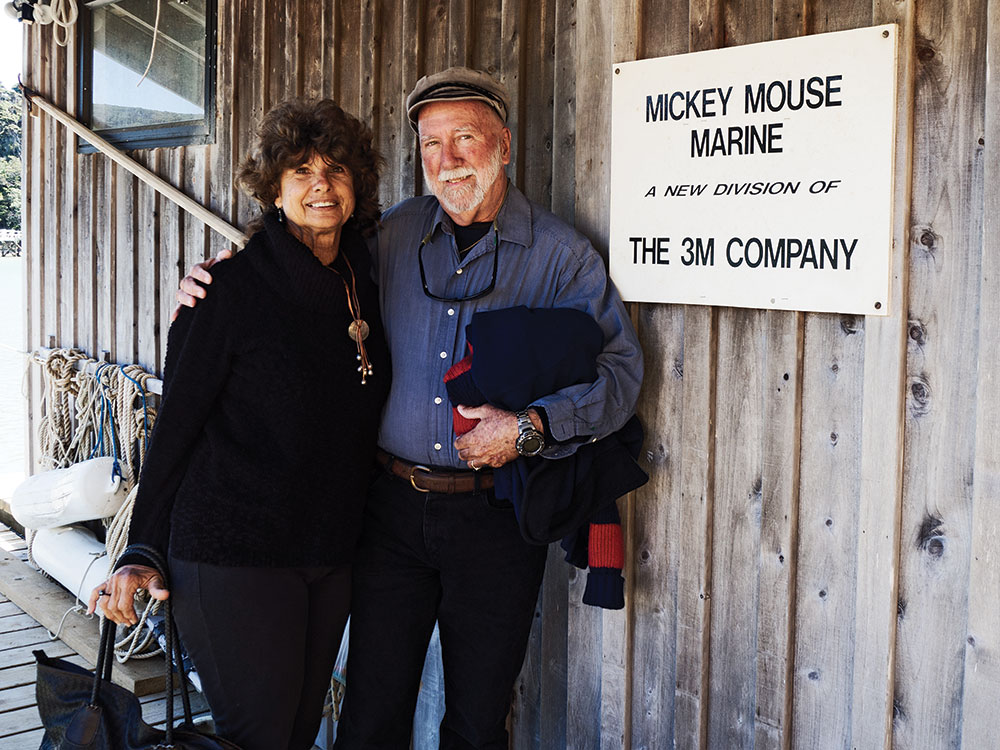
All Kiwis, whether of Polynesian, Melanesian, Maori or British ancestry, have a healthy sense of humor. (When this particular hui went on a tad too long, an aspiring Kiwi comic quipped, “All hui and no doie!”)
New Zealand has been welcoming cruising sailors for centuries. Whenever my vessel is on a pile mooring at the Whangarei Town Basin, I toss some flowers into the river at the exact spot where marine author Eric Hiscock died. Even while a child, he was a sailor and writer hero of mine. And the country still attracts talented marine scribes. Within a month of arriving I had Thanksgiving dinner with Lin Pardey on Kawau Island and drinks with Alvah Simon in Urquharts Bay near Bream’s Head; both are well-known book authors and long-term contributors to Cruising World.
Perhaps the most delightful aspect of this region is its multicultural optimism. No one whines here, they just get to it. Will their long-term imaginative efforts in forming the South Pacific Sailing Network be worth it? I’m not sure. But I know this, no nation I can think of works as hard to attract the marine visitor as New Zealand. Talk about people of purpose. How else could a tiny nation with micropurse strings compete against the wealthiest, most powerful nations on earth to twice win the America’s Cup, the oldest trophy in sports?
Amazing? Yes. Impossible? No. Nothing is impossible to a Kiwi.
The Goodlanders and Ganesh are resting and refitting over the winter in Whangarei.
Biosecurity and the Visiting Cruiser
New Zealand, which is on-the-watery-way to nowhere, has always been blessed and cursed by its isolation. For 80 million years, the only mammal ashore was the bat. Maori sailors arrived a mere 800 years ago, bringing rats and dogs with them. They were met by a seemingly endless flock of dumb and flightless birds known as moas. They stood 12 feet tall, weighed 500-plus pounds and were KFC-delicious. One hundred and fifty years later, the moas were extinct. Westerners, meanwhile, brought fat pigs, sneaky mice and virulent diseases. Both groups soon realized that their mutual environment was fragile and needed to be managed wisely if they were to survive. The most recent invasive species to threaten the Kiwis is the dreaded Mediterranean fan worm (Sabella spallanzanii). It arrived on a foreign freighter’s bottom, and soon choked local waters and severely threatened seafood exports.
This caused Biosecurity New Zealand to become hyperdiligent on exterior marine growth and bottom fouling. That’s the bad news for visiting cruisers. The good news is that officials, many of whom are sailors, are friendly, reasonable folks who only want their guidelines followed for the security of their homeland. Each official will do everything possible to help clear in a vessel expeditiously if that vessel’s crew is sincerely attempting to be in compliance with biosecurity regulations.
Skippers must pre notify officials of their arrival and fill out various biosecurity and customs forms in advance.
For recreational vessels coming from the tropics to stay more than 21 days, there are now only two ports of entry on the North Island: Opua and Marsden Cove. Basically, a foreign yacht needs to arrive with as clean a bottom as possible and be able to demonstrate that. This is commonly referred to as the Six/One Rule. A sailor must be able to prove that the boat has been hauled and antifouled within six months (via yard receipts, photographs, etc.) or that it had its bottom scraped of all fouling, especially in crevices like between rudder/skeg, around props and inside through hulls, within the last month.
So at present, all the arriving sailor has to do is dive over the side and thoroughly clean their boat’s bottom before 30 days of their arrival and then video it with a camera with time-stamp capability. It helps if you keep a “bio log” to officially record your efforts to be in compliance with the Craft Risk Management Standard (CRMS).
Upon arrival in Opua, inspectors will question you and inspect your hull with an underwater camera with a bright light. A slight slime layer and a few gooseneck barnacles are allowed but no acorn barnacles or bryozoans. If the hull is free of growth and you’ve demonstrated being antifouled within six months or cleaned within one month, you’re done.
If there’s obvious marine growth, bio-officials might opt to send down a diver (at the owner’s expense) and then require the boat to be hauled within 24 hours at the approved marine hauling facility nearby — or leave. In practice, departure is seldom requested because officials have done such a good job of informing the public of the requirements. In fact, this author knows of no cruising vessel that has attempted to comply with the above being ordered to either haul or immediately leave. Note: the marine industry is very important to the country’s financial growth; information packets containing all forms and rules are available at the New Zealand embassy in Nuku’alofa, Tonga, and also in Fiji and elsewhere.
Customs, which is a separate agency, will confiscate nearly all your fresh food; an updated list of requirements is available online. You will need to fill in forms NZCS 340, C1B and C4G; an arrival card; a border cash report; show the last port of clearance; a Primary Industries Master Declaration; pay your border levy of $18.73; have a valid passport; and, of course, fly your Q-flag.
Yes, clearing into the country is a bit of a hassle, but it only took us about 40 minutes in November of 2018, and everyone involved was both friendly and professional.






